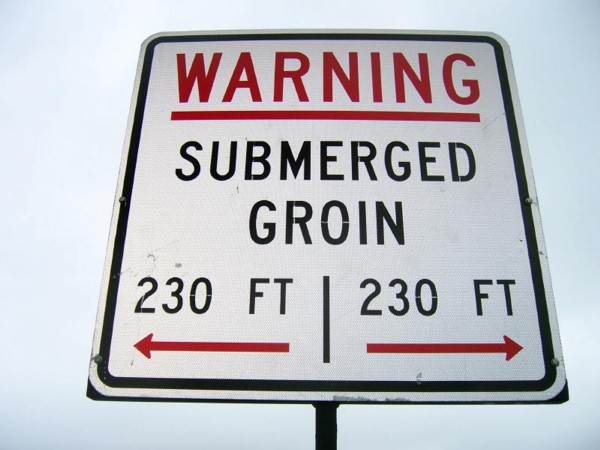I was checking out a Wiki article about
groins. No, not yours and mine, these groins (groynes in England) are used to help control shore erosion.
However, w/my juvenile mind in, uh, ahem,
high gear, so to speak, I was breaking up reading this article.
Picking and choosing phrases gives us these gems:
Quote:
|
A groyne (groin in the United States) is a rigid hydraulic structure...
|
Quote:
|
All of a groyne may be under water, in which case it is a submerged groyne.
|

Quote:
|
Groynes are generally made of wood, concrete, or rock...
|
Quote:
|
A groyne's length and elevation,...
|
Quote:
|
Groynes that are too long or too high...
|
Quote:
|
Groynes that are too short, too low, or too permeable...
|
Quote:
|
Flanking may occur if a groyne does not extend far enough...
|
Quote:
|
...groynes are often constructed...with a root...and a head.
|
Quote:
|
Groynes can be distinguished by how they are constructed...
|
Quote:
|
Groynes can be attracting,...or repelling.
|
Quote:
|
Attracting groynes point downstream...
|
Quote:
|
Repelling groynes point upstream...
|
Quote:
|
Groynes can be built with different...shapes. Examples are straight groynes, T head, L head, hockey stick, inverted hockey stick groynes, straight groynes with pier head,...and tail groynes.
|
What shape is your groin? And, how permeable is it?


